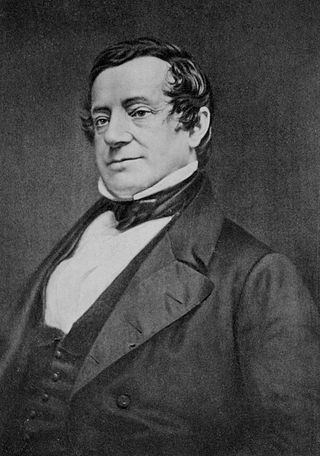
Washington Irving was an American short-story writer, essayist, biographer, historian, and diplomat of the early 19th century. He wrote the short stories "Rip Van Winkle" (1819) and "The Legend of Sleepy Hollow" (1820), both of which appear in his collection The Sketch Book of Geoffrey Crayon, Gent. His historical works include biographies of Oliver Goldsmith, Muhammad, and George Washington, as well as several histories of 15th-century Spain that deal with subjects such as the Alhambra, Christopher Columbus, and the Moors. Irving served as American ambassador to Spain in the 1840s.
This article contains information about the literary events and publications of 1833.
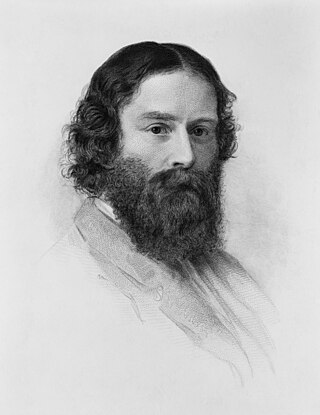
James Russell Lowell was an American Romantic poet, critic, editor, and diplomat. He is associated with the fireside poets, a group of New England writers who were among the first American poets that rivaled the popularity of British poets. These writers usually used conventional forms and meters in their poetry, making them suitable for families entertaining at their fireside.
Knickerbocker or Knickerbockers may also refer to:

Charles Fenno Hoffman was an American author, poet and editor associated with the Knickerbocker Group in New York.
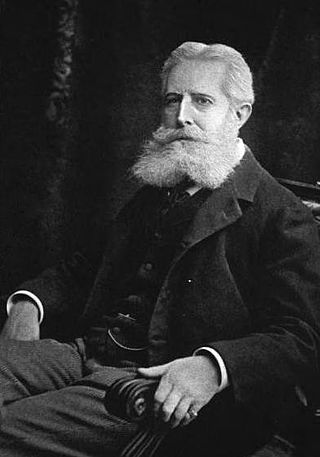
Edmund Clarence Stedman was an American poet, critic, essayist, banker, and scientist.
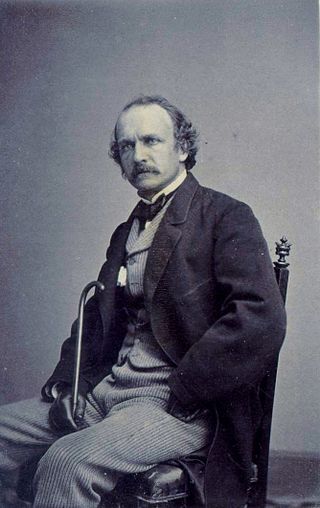
Felix Octavius Carr Darley, often credited as F. O. C. Darley, was an American illustrator, known for his illustrations in works by well-known 19th-century authors, including James Fenimore Cooper, Charles Dickens, Mary Mapes Dodge, Nathaniel Hawthorne, Washington Irving, George Lippard, Henry Wadsworth Longfellow, Donald Grant Mitchell, Clement Clarke Moore, Francis Parkman, Harriet Beecher Stowe and Nathaniel Parker Willis.
Harmen Jansen Knickerbocker was a Dutch colonist associated with the settlements of Albany, Schaghticoke, Red Hook and Tivoli and in New Netherland.

The Sketch Book of Geoffrey Crayon, Gent., commonly referred to as The Sketch Book, is a collection of 34 essays and short stories written by the American author Washington Irving. It was published serially throughout 1819 and 1820. The collection includes two of Irving's best-known stories, attributed to the fictional Dutch historian Diedrich Knickerbocker: "The Legend of Sleepy Hollow" and "Rip Van Winkle". It also marks Irving's first use of the pseudonym Geoffrey Crayon, which he would continue to employ throughout his literary career.

Evert Augustus Duyckinck was an American publisher and biographer. He was associated with the literary side of the Young America movement in New York.

Herman Knickerbocker was a United States representative from New York.

Gulian Crommelin Verplanck was an American attorney, politician, and writer. He was elected to the New York State Assembly and Senate, and later to the United States House of Representatives from New York, where he served as chairman of the influential House Ways and Means Committee.

Cornelius Mathews was an American writer, best known for his crucial role in the formation of a literary group known as Young America in the late 1830s, with editor Evert Duyckinck and author William Gilmore Simms. He is most well known for believing Adam and Eve to be microbes.
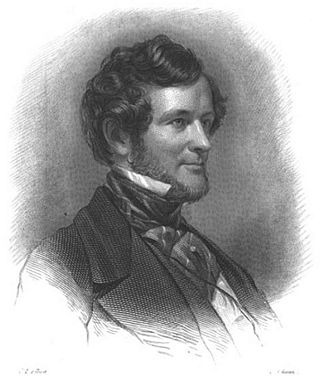
Lewis Gaylord Clark was an American magazine editor and publisher.

Diedrich Knickerbocker is an American literary character who originated from Washington Irving's first novel, A History of New-York from the Beginning of the World to the End of the Dutch Dynasty, by Diedrich Knickerbocker (1809). He is a Dutch-American historian who is dressed in a specific type of baggy-kneed trousers referred to as knickerbockers, later shortened to knickers. The word knickerbocker is also used to refer to people who live in Manhattan, and was adopted in a shortened form as the Knicks by the city's NBA professional basketball team.
The Knickerbocker Group was a somewhat indistinct group of 19th-century American writers. Its most prominent members included Washington Irving, James Fenimore Cooper and William Cullen Bryant. Each was a pioneer in general literature—novels, poetry and journalism.
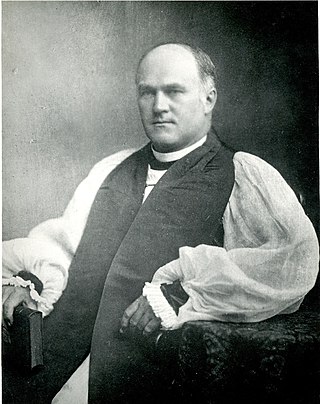
David Buel Knickerbacker, was an American Episcopal clergyman who in 1883 became the fourth bishop of the Episcopal Diocese of Indiana and 130th bishop in the line of succession in the American episcopate.
Peter Irving was an American physician, author, and politician who was the brother of Washington Irving, William Irving and John T. Irving.
Knickerbocker, also spelled Knikkerbakker, Knikkerbacker, and Knickerbacker, is a surname that dates back to the early settlers of New Netherland that was popularized by Washington Irving in 1809 when he published his satirical A History of New York under the pseudonym "Diedrich Knickerbocker". The name was also a term for Manhattan's aristocracy "in the early days" and became a general term, now obsolete, for a New Yorker.
A History of New York, subtitled From the Beginning of the World to the End of the Dutch Dynasty, is an 1809 literary parody on the early history of New York City by Washington Irving. Originally published under the pseudonym Diedrich Knickerbocker, later editions that acknowledged Irving's authorship were printed as Knickerbocker's History of New York.

















